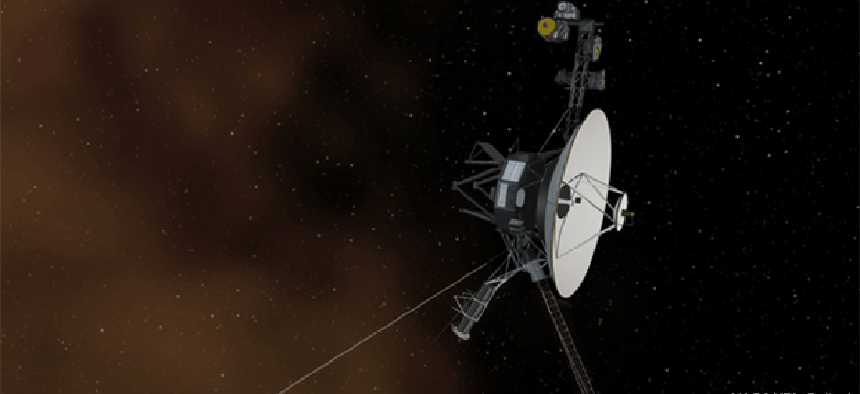Could humans follow Voyager out of the solar system?

People are pondering trips to Mars and beyond, but radiation is a threat. A "Star Trek"-inspired shield could be the answer.
Thirty six years ago, NASA launched the Voyager 1 spacecraft into outer space. But just this week NASA announced that Voyager did something never before seen in human history: It left the confines of our solar system. And Voyager continues to operate even today after three decades and 11,000,000,000 miles on the odometer, drifting into interstellar space where nothing from Earth has gone before.
In fact, Voyager probably crossed the heliopause, or bubble of the solar system, sometime in August of 2012. Scientists just recently figured that out after examining a plasma wave emitted from the sun as it passed over Voyager, which was compared with other plasma waves found in interstellar space. If we could look at space from Voyager's prospective, not much would have changed. But the fact that forces are acting on the craft differently proves that it is outside the bubble of the solar system.
However, while Voyager leaving the solar system might get some thinking about humans following, other news that recently came in may put a damper on the idea. Remember when Curiosity started measuring radiation on its way to Mars, and then also once it got to the planet in 2012? Well, it turns out that even inside a radiation-shielded spacecraft, a human would get about 100 times the normal radiation experienced on Earth during their trip to Mars. It would be like getting a CAT scan every five days. Although the radiation found in space is somewhat different than that on Earth, it should be a safe bet that extra exposure would not be healthy. It could cause cancer, mutations or even death from radiation sickness and organ failure.
Apparently, we can build shielding that would protect humans in space, but it would need to be nearly 20 feet of thick metal, which is far too heavy to be able to launch in the first place.
CNN reports that the solution may be something that “Star Trek” watchers have known for years. Simply put up the shields. The concept has to do with plasma, much like the kind that scientists used to determine where Voyager really was in space. The idea is that if an Earth-like magnetosphere could be put around a spacecraft, it would deflect much of the harmful radiation, just like on Earth.
Other ideas are being tested too, though they are much less fancy than an electronic shield. Lining the walls of a spacecraft with water, food or even human waste are possibilities. In the case of the poop-protected living space, hydrocarbons could absorb the radiation instead of the people. That's a fascinating concept, but please book my next flight in the shielded spaceship section instead of the one lined with excrement. Talk about a difference between first class and coach!
For now, let's celebrate Voyager, as it shows that we can actually build something that can survive in space. Now we just need to figure out how we can one day follow along.





